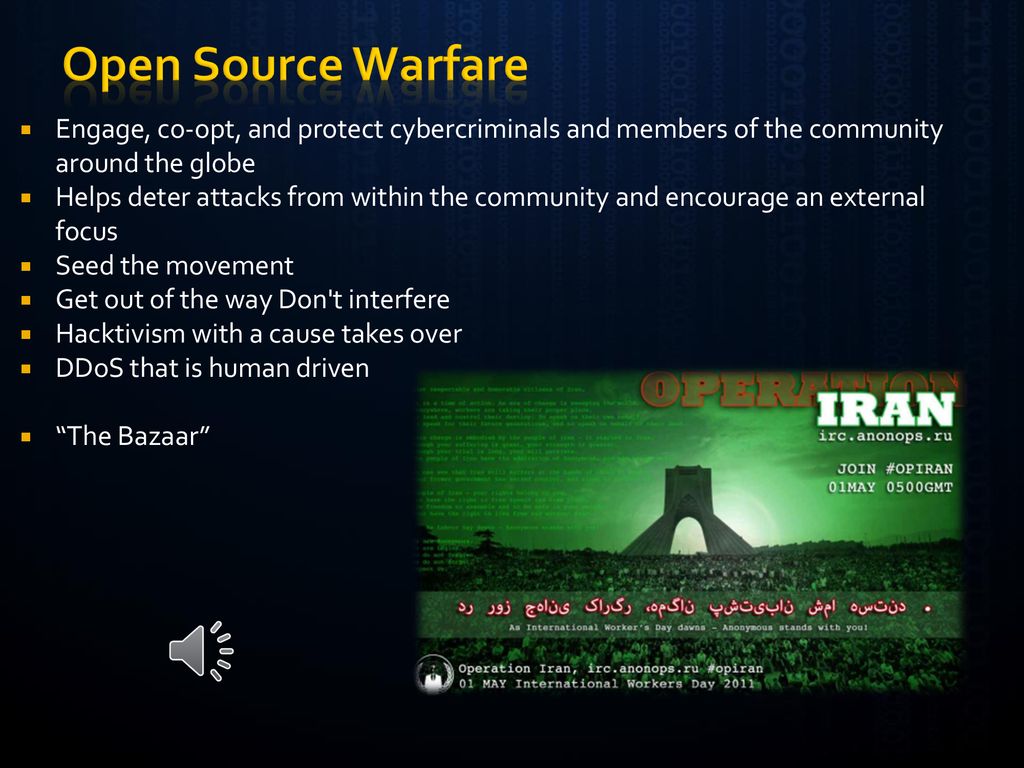
Hacktivists Turning to Ransomware Spread
Hacktivists turning to ransomware spread is a chilling trend reshaping the digital landscape. It’s no longer just about making a political statement; now, hacktivist groups are leveraging ransomware for financial gain, blurring the lines between activism and cybercrime. This shift raises serious questions about motivations, methods, and the future of online security. We’ll delve into the history of this evolution, examine the technical aspects of these attacks, and explore the legal and ethical implications of this increasingly sophisticated threat.
This isn’t your typical cybercrime story. We’re talking about groups motivated by ideology, using ransomware as a weapon to achieve their goals. Think of it as a digital protest gone rogue, where the collateral damage includes crippling businesses and stealing sensitive data. We’ll explore the tactics these groups use, the vulnerabilities they exploit, and the devastating consequences for victims.
We’ll also consider how law enforcement and cybersecurity professionals are trying to keep up with this rapidly evolving threat.
The Rise of Hacktivist Ransomware
The intersection of hacktivism and ransomware represents a significant evolution in the cyber landscape. Initially driven by ideological motivations, hacktivist groups are increasingly leveraging ransomware for financial gain, blurring the lines between activism and organized crime. This shift has profound implications for both the targets of attacks and the broader cybersecurity ecosystem. Understanding this transition requires examining the historical context of hacktivism and the factors driving this concerning trend.Hacktivism, in its earliest forms, focused primarily on disruption and exposure.
Groups like Anonymous, known for their decentralized structure and large-scale operations, used Distributed Denial-of-Service (DDoS) attacks to target organizations perceived as unjust or oppressive. Data breaches were employed to expose sensitive information, aiming to shame or pressure targets into changing their practices. However, the inherent limitations of these methods—the lack of direct financial gain and the difficulty in sustaining large-scale operations—led some groups to explore more lucrative avenues.
Ransomware, offering a direct financial incentive and a more easily monetized outcome, emerged as an attractive alternative.
Motivations Behind Hacktivist Ransomware Adoption, Hacktivists turning to ransomware spread
The adoption of ransomware by hacktivist groups stems from a confluence of factors. While some groups maintain their ideological motivations, the promise of substantial financial returns significantly influences their tactics. The funds generated can be used to further their operations, fund other activist projects, or even line the pockets of individual members. Furthermore, the relative ease of deploying ransomware compared to other sophisticated cyberattacks makes it an appealing option for groups lacking extensive technical expertise.
The anonymity offered by the dark web and cryptocurrency transactions further reduces the risk of apprehension. Finally, the success of other groups in leveraging ransomware for financial gain acts as a powerful incentive for others to follow suit.
Tactics Employed by Hacktivist Ransomware Groups
Hacktivist ransomware groups employ tactics that often differ from traditional cybercriminal organizations. While both groups aim for financial gain, the former sometimes integrate ideological messaging into their attacks. This might involve targeting organizations associated with specific political agendas or social issues, alongside the financial demands. The choice of targets is often more politically charged, reflecting the group’s ideology, rather than purely financial considerations.
For instance, a traditional ransomware group might target a hospital for its potential to pay a large ransom, while a hacktivist group might target the same hospital if it is associated with a controversial government policy. However, this distinction is increasingly blurred, as many groups now prioritize financial gain, regardless of the target’s political alignment.
Examples of Notable Hacktivist Ransomware Attacks
While attributing specific ransomware attacks definitively to hacktivist groups is challenging due to the decentralized and often anonymous nature of their operations, certain attacks exhibit characteristics suggestive of hacktivist involvement. For example, attacks targeting government agencies or corporations perceived as unethical or harmful often contain ideological messages embedded within the ransom notes or the encrypted data itself. Analyzing the ransom demands, the choice of targets, and the accompanying messaging can offer clues about the motivations behind the attack.
The lack of readily available, comprehensively documented cases, however, hinders a detailed analysis and precise attribution in many instances. Further research and investigation are needed to better understand the extent and impact of hacktivist ransomware attacks.
Technical Aspects of Hacktivist Ransomware

Hacktivist groups, driven by ideological motivations rather than pure profit, are increasingly leveraging ransomware as a tool to achieve their goals. Understanding the technical underpinnings of their attacks is crucial for effective defense. This section delves into the methods employed by these groups, from initial infection to data exfiltration and ransom demands.
Malware Delivery Methods
Hacktivists utilize various methods to deliver their ransomware payloads. Common techniques include phishing emails containing malicious attachments or links, exploiting known vulnerabilities in software and web applications, and leveraging compromised infrastructure such as infected websites or compromised cloud servers. Sophisticated groups may employ social engineering tactics to gain initial access, building trust with their targets before deploying the malware.
For instance, a group might pose as a legitimate organization, sending a seemingly innocuous email containing a link to a fake login page.
Encryption Techniques and Exfiltration Methods
The encryption methods employed by hacktivist ransomware vary in complexity. Some groups might utilize readily available, open-source encryption libraries, while others develop custom encryption algorithms for increased obfuscation and difficulty in decryption. Symmetric encryption, using a single key for both encryption and decryption, is frequently used for its speed, although asymmetric encryption, which uses separate public and private keys, might be employed for key exchange or digital signatures.
Exfiltration methods range from simply copying files to more sophisticated techniques like using command-and-control servers to steal data incrementally, minimizing the risk of detection. Data might be exfiltrated directly from the victim’s network or through compromised cloud storage accounts.
Ransomware Infrastructure
Hacktivist groups often utilize decentralized infrastructure to manage and distribute their ransomware. This may involve a network of compromised servers scattered across various jurisdictions, making it difficult to track and disrupt their operations. Command-and-control (C2) servers are used to communicate with infected systems, receive instructions, and deliver updates to the malware. These C2 servers are frequently hosted on the dark web or through anonymizing services like Tor, further obscuring the group’s identity and location.
The use of cryptocurrency for ransom payments further enhances anonymity.
Hypothetical Hacktivist Ransomware Attack Scenario
Let’s imagine a scenario involving a hacktivist group targeting a government agency. The attack begins with a spear-phishing email, carefully crafted to appear legitimate and target a specific employee. The email contains a malicious link, leading to a compromised website that downloads the ransomware payload. Once executed, the ransomware encrypts sensitive data on the agency’s network. Simultaneously, it exfiltrates a subset of the data to a C2 server controlled by the hacktivist group.
The group then publishes a portion of the stolen data online, demonstrating their ability to cause significant damage and pressure the agency into paying the ransom – perhaps demanding the release of a political prisoner as opposed to monetary payment.
Technical Sophistication Comparison
| Group Name | Ransomware Type | Encryption Method | Exfiltration Method |
|---|---|---|---|
| Example Group A | Custom Ransomware | AES-256 with custom key generation | Direct file transfer via compromised FTP server |
| Example Group B | Modified open-source ransomware | RSA-2048 for key exchange, AES-128 for encryption | Incremental data exfiltration via C2 server |
| Example Group C | Open-source ransomware with minor modifications | AES-128 | Direct file copy before encryption |
| Example Group D | Custom Ransomware with data leak capabilities | ChaCha20 with custom key derivation | Tor-based exfiltration to multiple servers |
The Victims of Hacktivist Ransomware Attacks
Hacktivist ransomware attacks, while motivated by ideology rather than pure profit, still inflict significant damage on their victims. Understanding who these victims are and the consequences they face is crucial for developing effective mitigation strategies. The targets aren’t random; they’re carefully selected based on the hacktivist group’s political or social agenda.The types of organizations most frequently targeted are those perceived as embodying the hacktivist group’s opposition.
This can range from government agencies and corporations deemed unethical or exploitative to organizations involved in controversial projects like arms manufacturing or fossil fuel extraction. The selection process often involves extensive research and monitoring of the target’s public image and activities.
Organizations Frequently Targeted by Hacktivist Ransomware
Hacktivist groups often prioritize targets with high public visibility and significant influence. Government entities, particularly those involved in controversial policies or perceived as oppressive, are prime targets. Similarly, large corporations, especially those facing public criticism for their environmental practices, labor relations, or business ethics, frequently find themselves in the crosshairs. Finally, organizations involved in research or development of technologies considered ethically questionable, like facial recognition or autonomous weapons systems, are also vulnerable.
The selection is driven by the hacktivist’s aim to maximize the impact of their actions, both in terms of financial damage and public attention.
Impact of Hacktivist Ransomware Attacks on Targeted Organizations
The consequences of a successful hacktivist ransomware attack can be devastating. Financial losses are substantial, encompassing the ransom payment itself, the cost of data recovery and system restoration, legal fees, and potential fines for data breaches. Reputational damage is equally significant, potentially leading to loss of customer trust, decreased investment, and difficulty attracting and retaining talent. Operational disruptions caused by downtime and data loss can cripple businesses, halting production, disrupting services, and impacting overall profitability.
For example, a successful attack against a healthcare provider could lead to patient data breaches, causing significant reputational damage and potential legal action. A similar attack on a financial institution could disrupt services, leading to financial losses and erosion of customer confidence.
Victim Responses to Hacktivist Ransomware Attacks
Victims’ responses vary depending on the severity of the attack, the organization’s resources, and the nature of the hacktivist group’s demands. Some organizations choose to pay the ransom, prioritizing the swift restoration of operations and data. Others refuse to negotiate, opting instead to invest in data recovery and system rebuilding, potentially facing extended downtime and reputational damage. In some cases, victims may choose to cooperate with law enforcement agencies to investigate the attack and potentially apprehend the perpetrators.
The decision-making process is often complex and involves weighing the potential benefits and risks of each option. Publicly acknowledging the attack and communicating transparently with stakeholders is often part of a victim’s response strategy.
Mitigating the Risk of Hacktivist Ransomware Attacks
Organizations can significantly reduce their vulnerability to hacktivist ransomware attacks by implementing robust security measures.
- Regularly update software and operating systems to patch known vulnerabilities.
- Implement multi-factor authentication to enhance account security.
- Conduct regular security awareness training for employees to improve their ability to identify and avoid phishing attempts and other social engineering tactics.
- Develop and maintain comprehensive data backup and recovery plans, ensuring backups are stored offline and securely.
- Implement robust network security measures, including firewalls, intrusion detection systems, and data loss prevention (DLP) tools.
- Regularly assess and monitor the organization’s security posture to identify and address potential weaknesses.
- Develop an incident response plan to guide the organization’s response in the event of a ransomware attack.
- Maintain open communication channels with stakeholders to facilitate transparent information sharing during and after an incident.
Legal and Ethical Considerations
The blurring lines between hacktivism and criminal activity, particularly when ransomware is involved, present complex legal and ethical challenges. Hacktivist groups often justify their actions by targeting organizations perceived as morally reprehensible, creating a moral gray area that complicates legal responses and public perception. This section examines the legal hurdles in prosecuting these groups, the ethical dilemmas involved, international legal variations, and the crucial role of law enforcement and cybersecurity agencies.
Prosecuting Hacktivist Ransomware Groups
Prosecuting hacktivist ransomware groups faces significant hurdles. Jurisdictional issues often arise, as attacks may originate from one country, target victims in another, and utilize servers in yet another. Establishing a clear chain of custody for digital evidence is also crucial, demanding specialized expertise and international cooperation. Furthermore, proving intent – whether the primary motive was financial gain or ideological disruption – can be challenging, impacting sentencing and the legal classification of the crime.
The decentralized and anonymous nature of many hacktivist groups further complicates investigations and prosecutions. For example, the case of a group using distributed networks to launch attacks would require tracing the actions across numerous jurisdictions and individuals, making prosecution difficult and potentially lengthy.
Ethical Dilemmas Surrounding Hacktivist Actions
The actions of hacktivists raise significant ethical questions. While their targets may be organizations deemed morally culpable (e.g., those involved in human rights abuses or environmental damage), the use of ransomware, which inflicts harm on innocent individuals and organizations, is ethically problematic. The potential for collateral damage, affecting employees, customers, or unrelated third parties, needs careful consideration. The ethical debate centers around the justification of means (ransomware attacks) versus the perceived moral ends (punishing unethical organizations).
This creates a complex situation where even if the target is considered morally flawed, the methods used to achieve the goals may be highly unethical.
International Legal Responses to Hacktivist Ransomware
International legal responses to hacktivist ransomware attacks vary considerably. Some countries have stronger legal frameworks and enforcement capabilities than others. The level of cooperation between nations in investigating and prosecuting these crimes also differs significantly. Countries with robust cybersecurity infrastructure and legal frameworks may be more effective in pursuing these groups, while others might lack the resources or legal tools.
For instance, countries with strong data protection laws and international cooperation agreements are better positioned to pursue cross-border investigations compared to those with weaker legal frameworks or limited international cooperation. This disparity creates a haven for some groups, leading to a global cat-and-mouse game between perpetrators and law enforcement.
The Role of Law Enforcement and Cybersecurity Agencies
Law enforcement and cybersecurity agencies play a critical role in combating hacktivist ransomware. This involves proactive threat intelligence gathering, coordinated international investigations, and the development of effective prevention and response strategies. Collaboration between agencies is crucial to track down perpetrators, seize assets, and prosecute offenders. Furthermore, public awareness campaigns and education programs can help mitigate the risk of attacks and improve incident response capabilities.
For example, the collaborative efforts of Interpol and national cybersecurity agencies in tracking down and disrupting significant ransomware operations have shown the effectiveness of international cooperation. However, challenges remain in resource allocation, technological advancements in evading detection, and the persistent anonymity offered by some online platforms.
It’s unsettling to see hacktivists increasingly relying on ransomware, shifting from digital activism to digital extortion. This evolution highlights the need for robust security solutions, and understanding how to quickly build and deploy those solutions is key. That’s why I’ve been diving into the world of application development, exploring the possibilities offered by domino app dev the low code and pro code future , to see how it can help in the fight against this rising threat.
Ultimately, faster development cycles could mean quicker responses to the evolving tactics of these hacktivist groups and their ransomware campaigns.
The Future of Hacktivist Ransomware: Hacktivists Turning To Ransomware Spread
The convergence of increasingly sophisticated hacking techniques, readily available ransomware-as-a-service (RaaS) platforms, and a volatile geopolitical landscape paints a concerning picture for the future of hacktivist ransomware attacks. We can expect a significant escalation in the scale, complexity, and impact of these attacks, driven by technological advancements and the evolving motivations of hacktivist groups.The increasing sophistication of ransomware will fundamentally alter the nature of future attacks.
We’re moving beyond simple file encryption; attacks will leverage AI for more targeted and efficient data exfiltration, employ advanced evasion techniques to bypass security measures, and utilize more insidious forms of extortion beyond simple data encryption. The use of double extortion – combining data encryption with the threat of public data leaks – will become even more prevalent, leveraging the power of social media and dark web forums for maximum impact.
Future Hacktivist Ransomware Attack Scenario
Imagine a future attack targeting a major international corporation involved in controversial resource extraction. A highly skilled hacktivist group, potentially operating under the guise of a newly formed activist collective, uses a combination of zero-day exploits and social engineering to gain initial access to the company’s network. This initial breach leverages vulnerabilities in the company’s legacy systems, a common weakness in many large organizations.
Once inside, the group deploys a custom-built ransomware variant utilizing advanced encryption algorithms resistant to current decryption techniques. Simultaneously, a sophisticated AI-powered tool autonomously identifies and exfiltrates sensitive data, including proprietary technology, financial records, and potentially compromising internal communications. The group then uses a decentralized communication network, including encrypted messaging apps and dark web forums, to demand a significant ransom, threatening to release the stolen data publicly if their demands are not met.
The attack’s impact extends beyond financial losses; the release of sensitive data could trigger significant reputational damage, regulatory investigations, and legal challenges. The attackers could even leverage the stolen data to blackmail individuals within the corporation, extending the attack’s reach and impact. This scenario is not unrealistic; many of the technologies and tactics involved are already in use, and the sophistication level is steadily increasing.
Potential Future Developments in Hacktivist Ransomware
The following table Artikels potential future developments, their impacts, and potential mitigation strategies:
| Development | Impact on Victims | Impact on Law Enforcement | Potential Mitigation Strategies |
|---|---|---|---|
| Increased use of AI in ransomware development and deployment | More targeted and effective attacks, increased difficulty in recovery, greater financial and reputational damage | Challenges in attribution and investigation, difficulty in disrupting attacks | Investment in AI-based threat detection and response, development of AI-resistant encryption techniques |
| Expansion of double extortion tactics | Increased pressure to pay ransom due to threat of data leak, significant reputational damage | Increased complexity of investigations, difficulty in preventing data leaks | Improved data security practices, robust incident response plans, proactive public relations strategies |
| Increased collaboration between hacktivist groups | Larger-scale attacks, more sophisticated techniques, increased difficulty in attribution | Challenges in identifying and disrupting coordinated attacks | Enhanced international cooperation, improved information sharing between law enforcement agencies |
| Exploitation of IoT devices and critical infrastructure | Disruption of essential services, significant societal impact | Increased challenges in identifying and responding to attacks, potential for widespread panic | Improved cybersecurity standards for IoT devices, investment in critical infrastructure protection |
Conclusive Thoughts

The rise of hacktivist ransomware presents a complex and evolving challenge. While the motivations might be rooted in ideology, the methods are undeniably criminal, causing significant financial and reputational damage to victims. Understanding the technical intricacies, legal frameworks, and ethical dilemmas surrounding this phenomenon is crucial for both individuals and organizations seeking to protect themselves in this increasingly dangerous digital world.
The future likely holds even more sophisticated attacks, demanding proactive measures and international collaboration to combat this threat effectively. Stay vigilant, stay informed, and stay safe.
Essential FAQs
What motivates hacktivists to use ransomware?
Motivations vary, but often include financial gain, disrupting perceived enemies, and raising awareness for a cause. The line between activism and criminal activity becomes blurred.
Are hacktivist ransomware attacks different from those by traditional cybercriminals?
While both aim for financial gain or disruption, hacktivists often target organizations aligned with their ideology, making their attacks more politically charged.
What legal repercussions do hacktivists face?
Legal responses vary by country. Prosecution can be challenging due to jurisdictional issues and the difficulty in tracing perpetrators.
How can organizations protect themselves from hacktivist ransomware?
Robust cybersecurity practices, including regular backups, employee training, and strong network security, are essential. Staying informed about current threats is also key.




